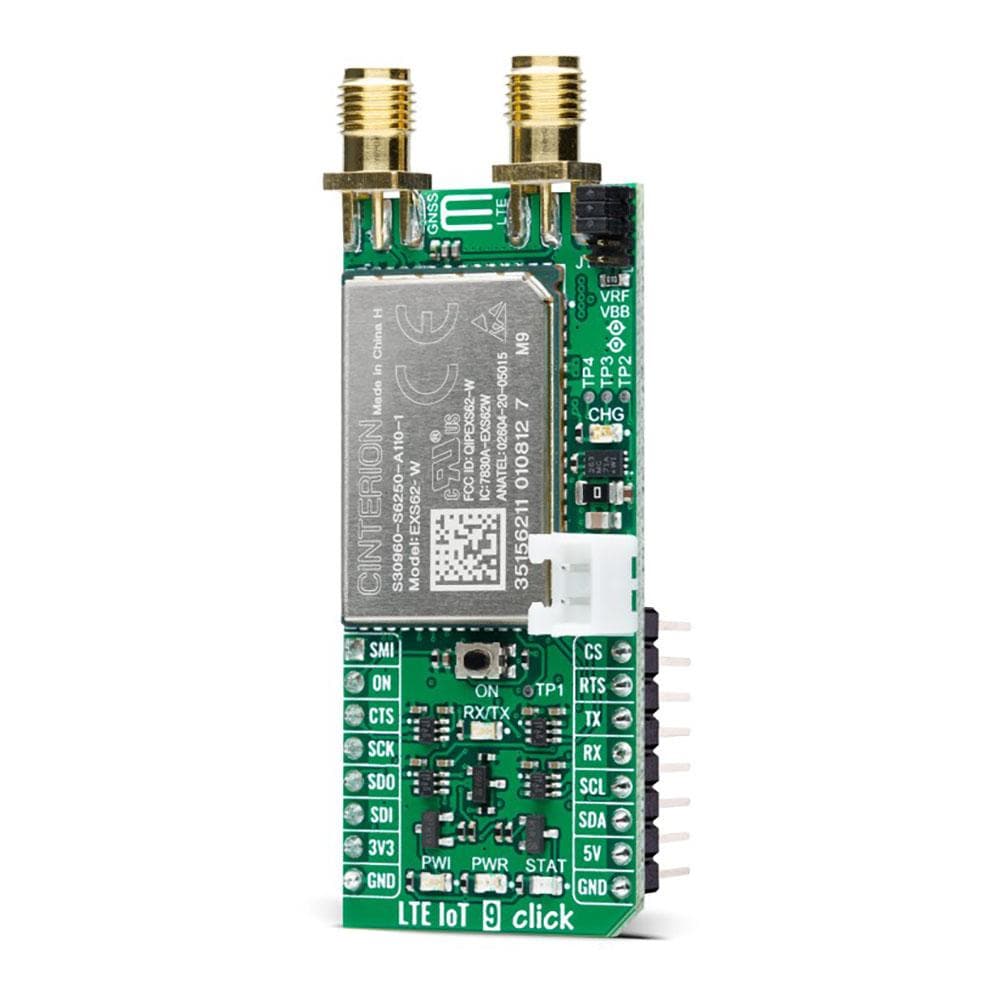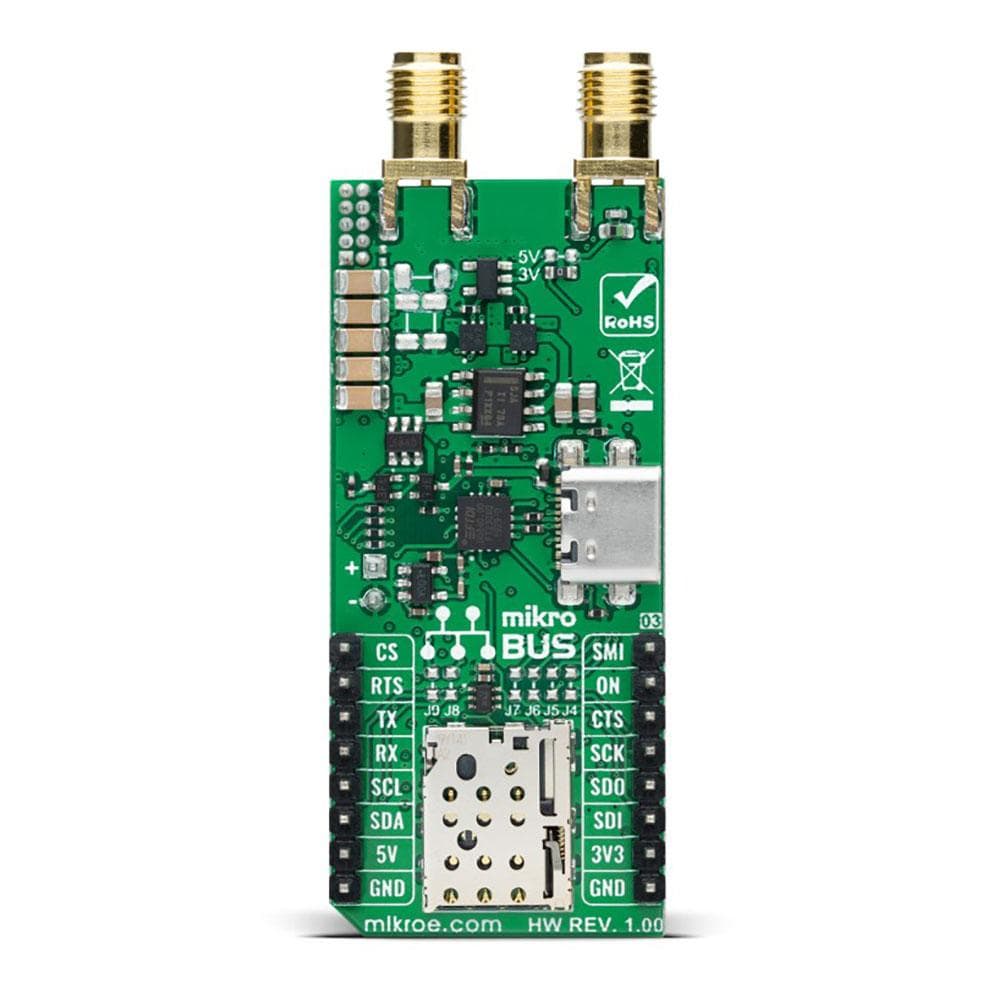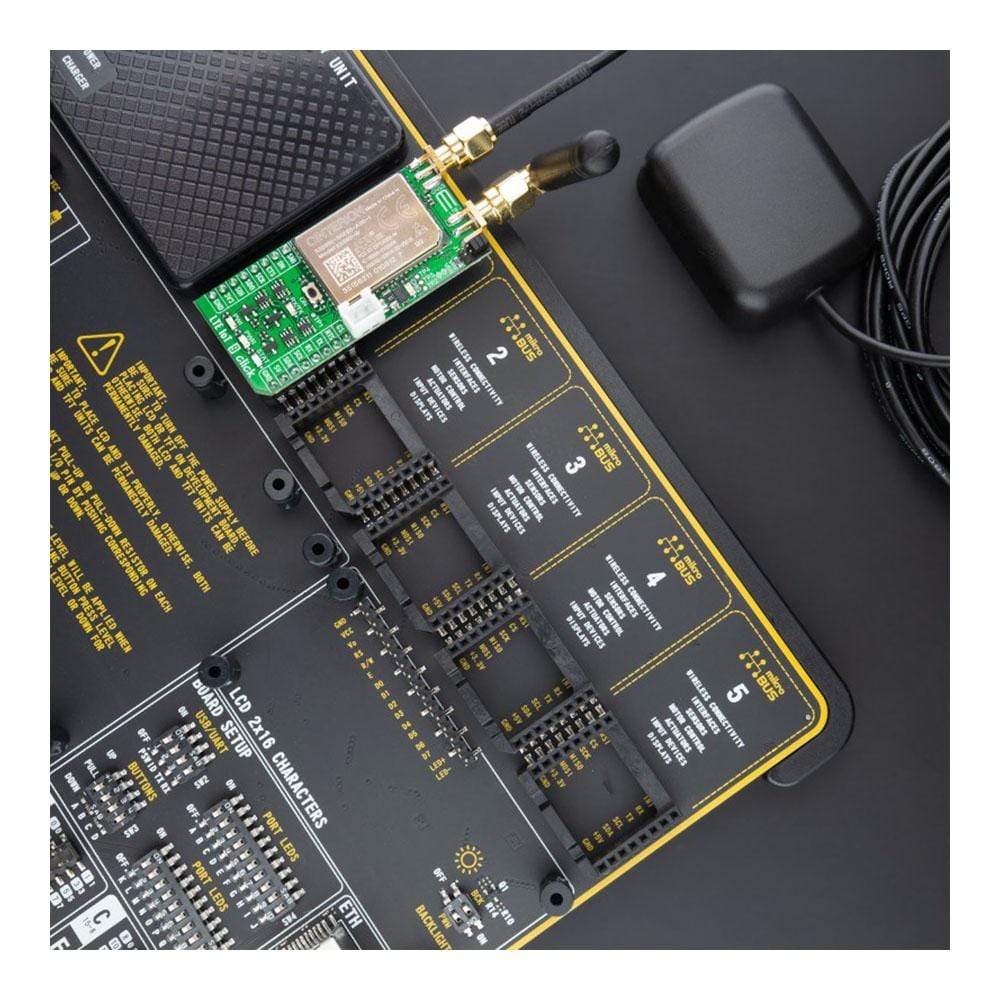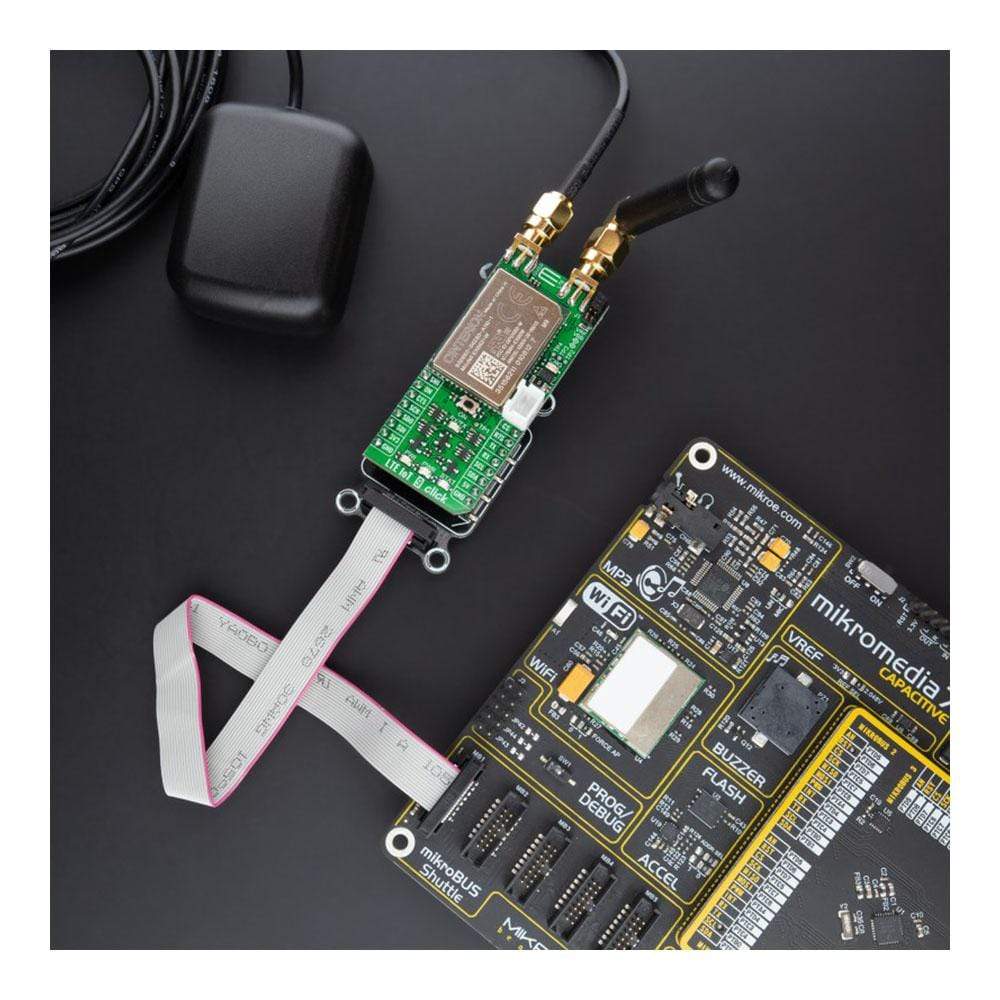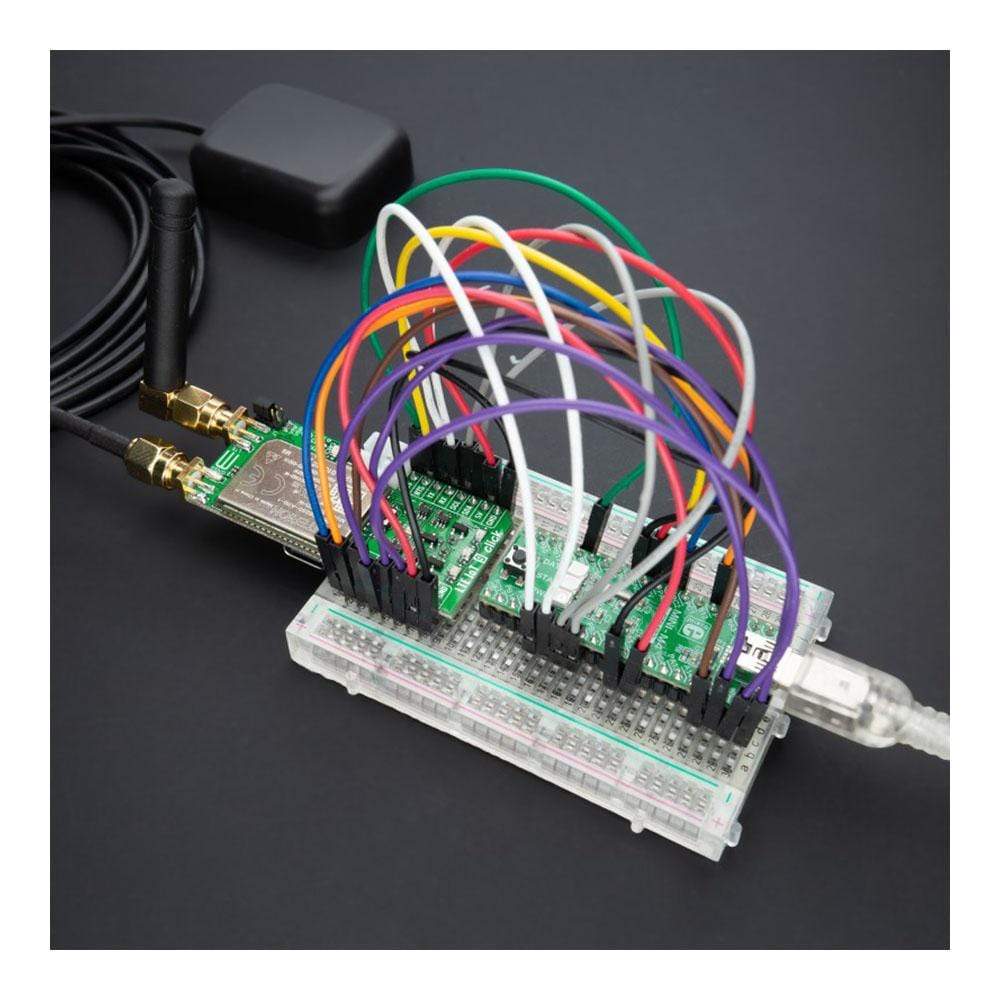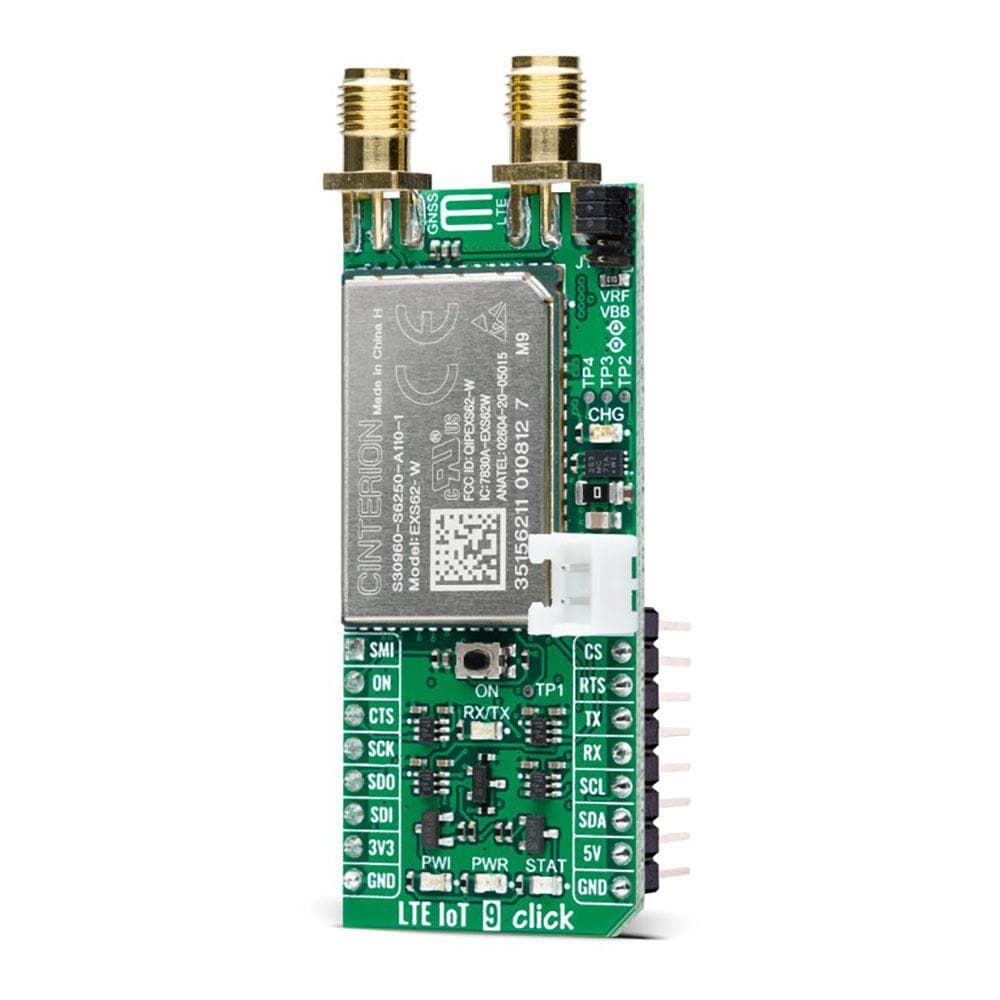
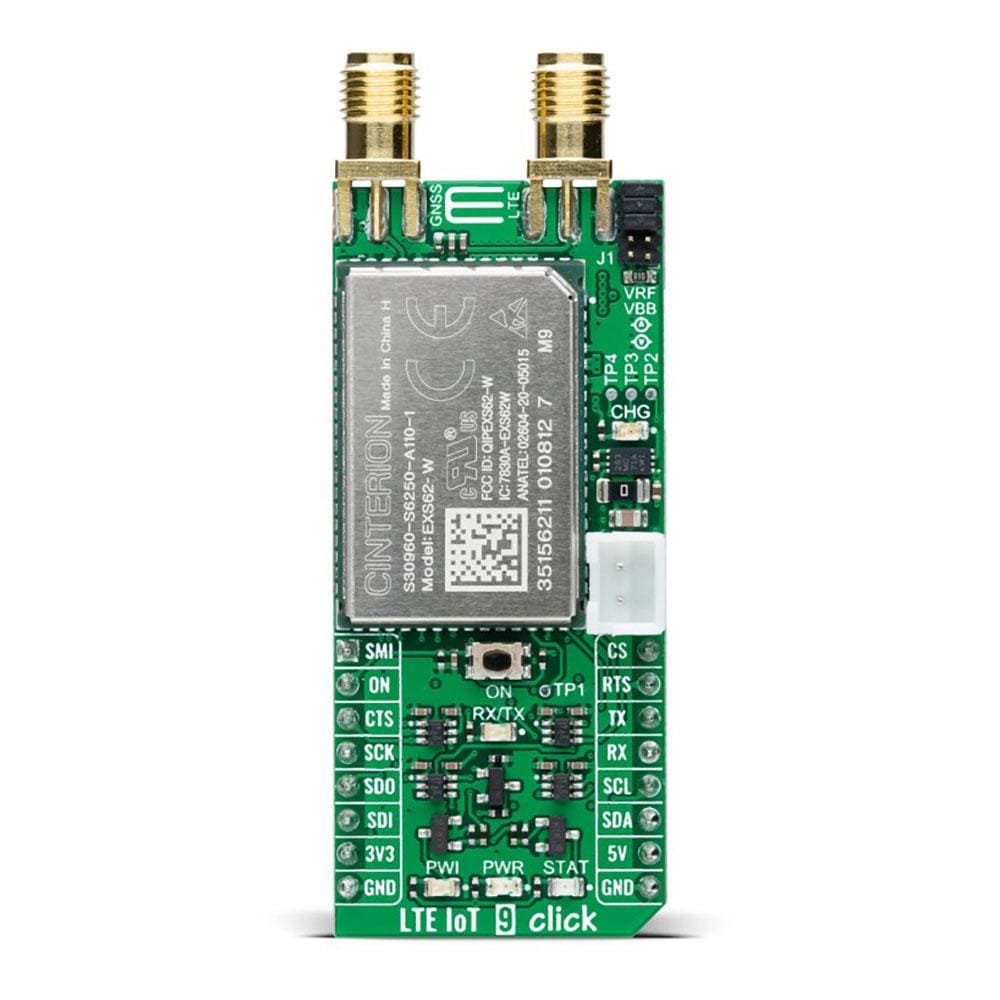
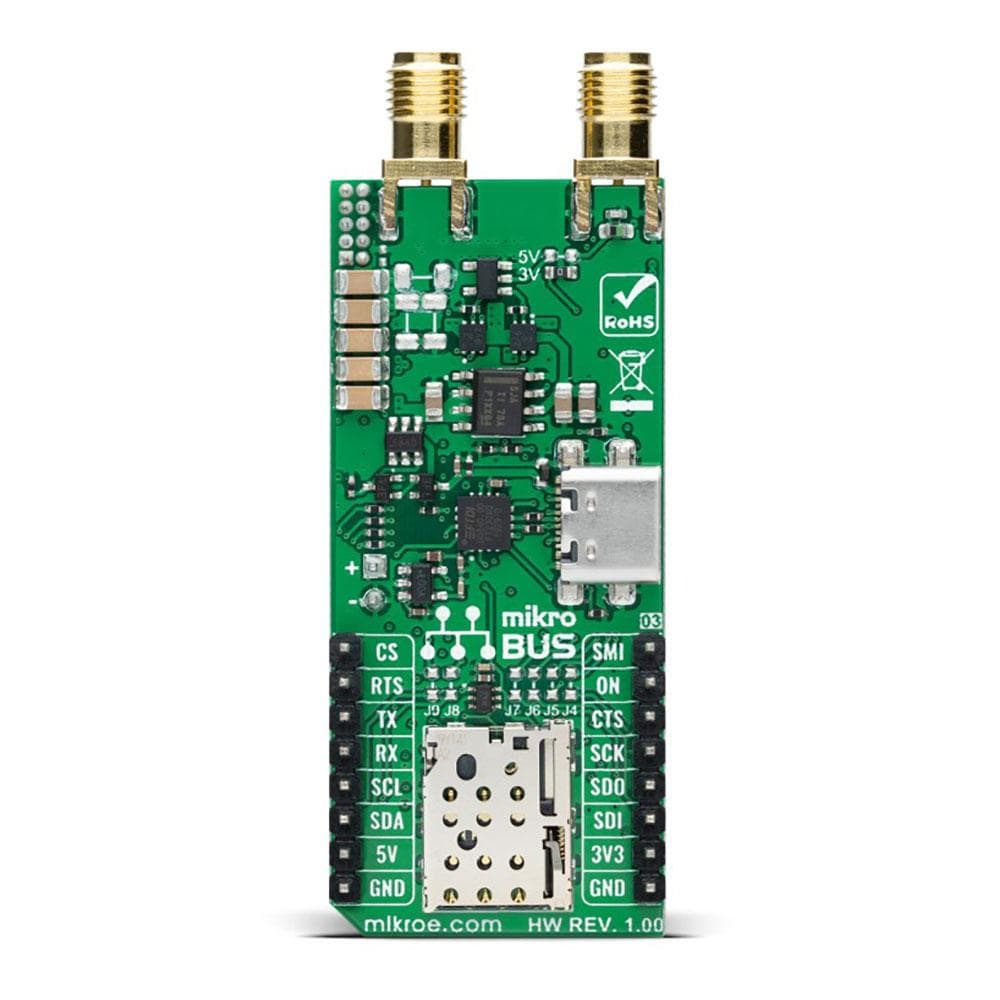
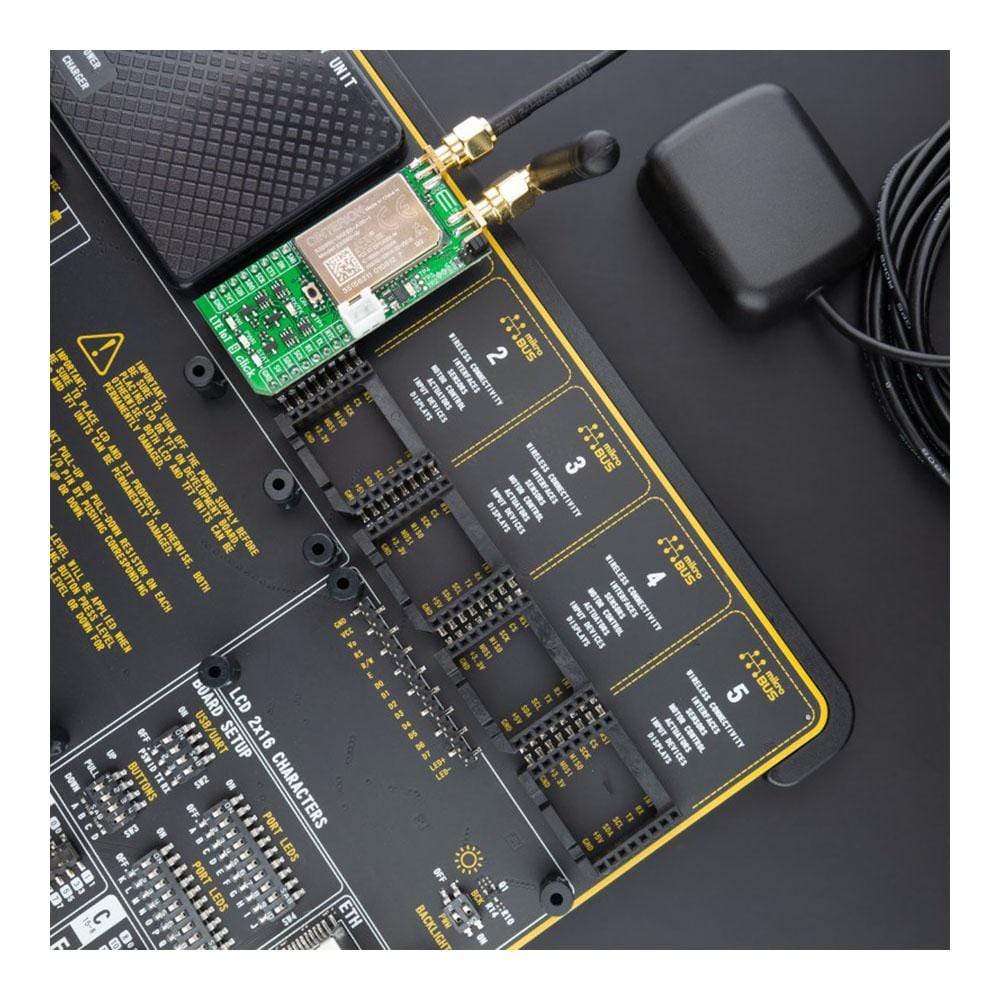

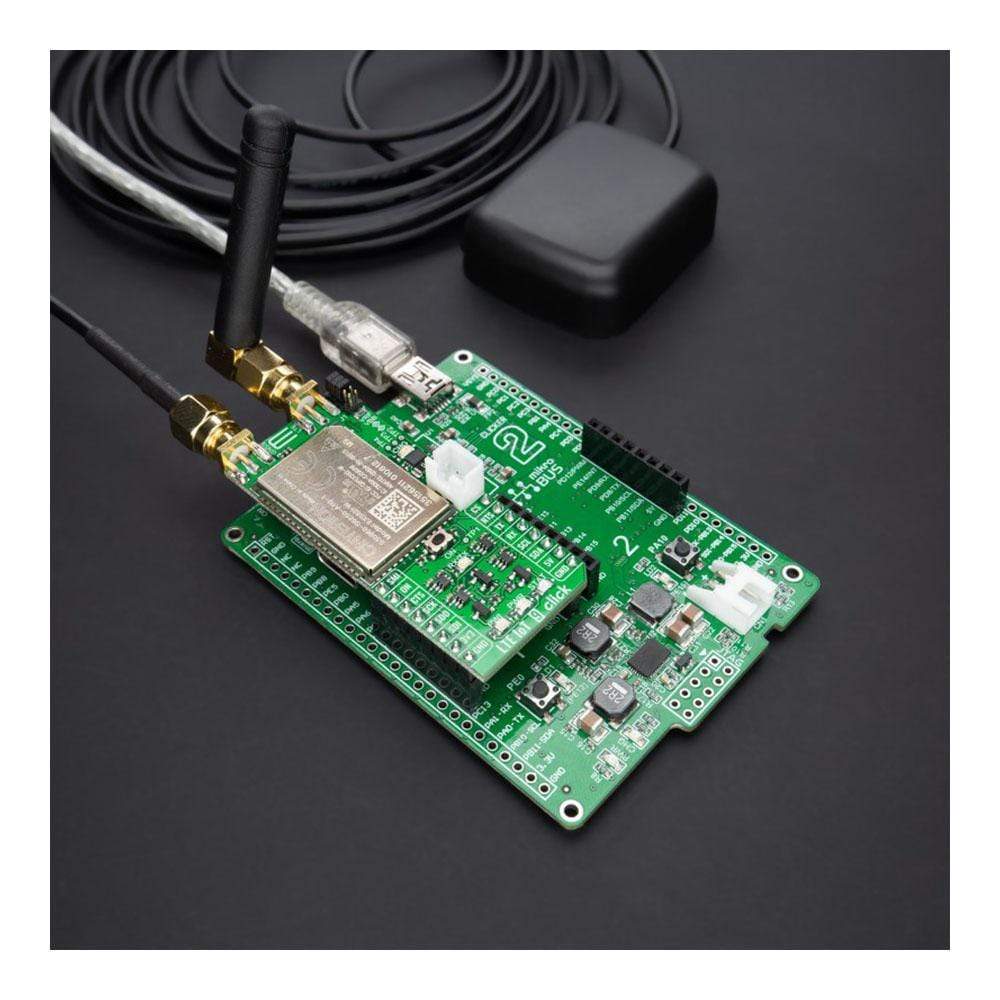
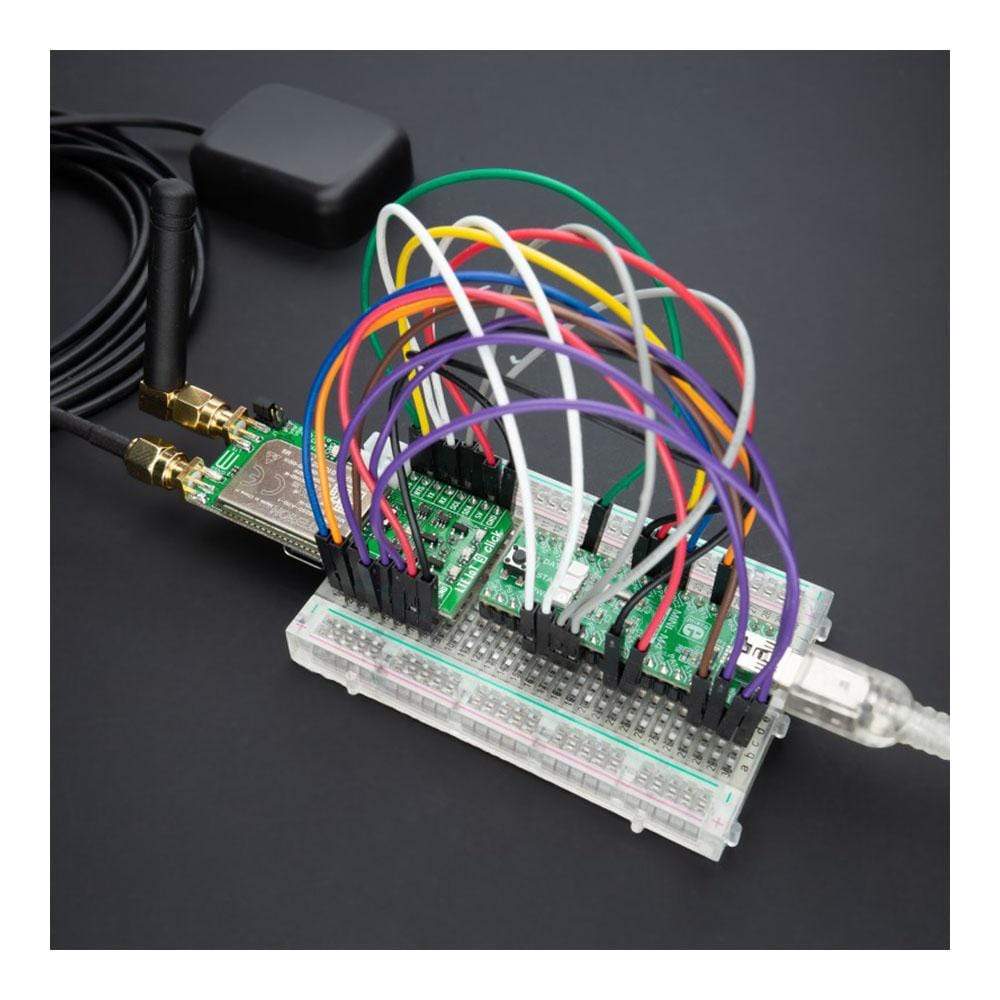
Overview
The LTE IoT 9 Click Board™ is a compact add-on module that contains a Low Power Wide Area (LPWA) Wireless IoT module which is 3GPP Release 14 compliant. It allows connections to the LTE CAT-M1 and CAT NB1/2 networks. This board features the EXS62-W, LTE-IoT Wireless Module from Thales that offers a rich set of Internet protocols and industry-standard interfaces such as UART, USB, etc. Global IoT connectivity, integrated GNSS support, SMS support, extended coverage range, and reduced power consumption make this single IoT module an excellent choice for device makers while ensuring worldwide reliability. This Click Board™ is suitable for logistics and asset tracking, predictive maintenance, industrial, smart agriculture, and many more applications.
The LTE IoT 9 Click Board™ is supported by a mikroSDK compliant library, which includes functions that simplify software development. This Click Board™ comes as a thoroughly tested product, ready to be used on a system equipped with the mikroBUS™ socket.
Downloads
Der LTE IoT 9 Click Board™ ist ein kompaktes Zusatzmodul das ein Low Power Wide Area (LPWA) Wireless IoT-Modul enthält, das 3GPP Release 14-kompatibel ist. Es ermöglicht Verbindungen zu den LTE CAT-M1- und CAT NB1/2-Netzwerken. Diese Platine verfügt über das EXS62-W, LTE-IoT Wireless-Modul von Thales, das eine Vielzahl von Internetprotokollen und Industriestandardschnittstellen wie UART, USB usw. bietet. Globale IoT-Konnektivität, integrierte GNSS-Unterstützung, SMS-Unterstützung, erweiterte Reichweite und reduzierter Stromverbrauch machen dieses einzelne IoT-Modul zu einer ausgezeichneten Wahl für Gerätehersteller und gewährleisten gleichzeitig weltweite Zuverlässigkeit. Dieses Click Board™ eignet sich für Logistik und Anlagenverfolgung, vorausschauende Wartung, Industrie, intelligente Landwirtschaft und viele weitere Anwendungen.
Das LTE IoT 9 Click Board™ wird durch eine mikroSDK-kompatible Bibliothek unterstützt, die Funktionen enthält, die die Softwareentwicklung vereinfachen. Dieses Click Board™ ist ein gründlich getestetes Produkt und kann auf einem System verwendet werden, das mit der mikroBUS™-Buchse ausgestattet ist.
| General Information | |
|---|---|
Part Number (SKU) |
MIKROE-4465
|
Manufacturer |
|
| Physical and Mechanical | |
Weight |
0.026 kg
|
| Other | |
Country of Origin |
|
HS Code Customs Tariff code
|
|
EAN |
8606027382130
|
Warranty |
|
Frequently Asked Questions
Have a Question?
Be the first to ask a question about this.

